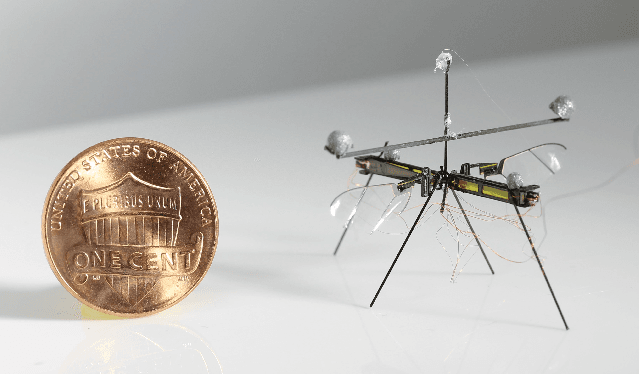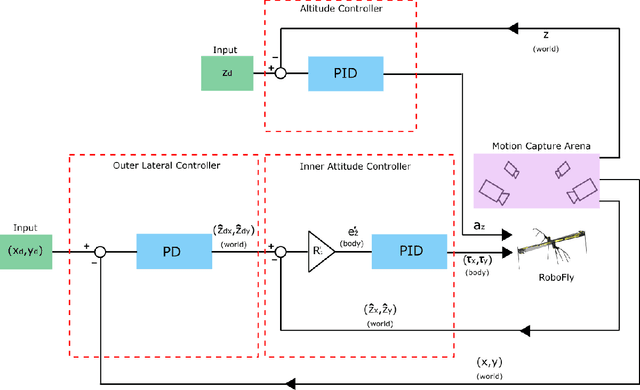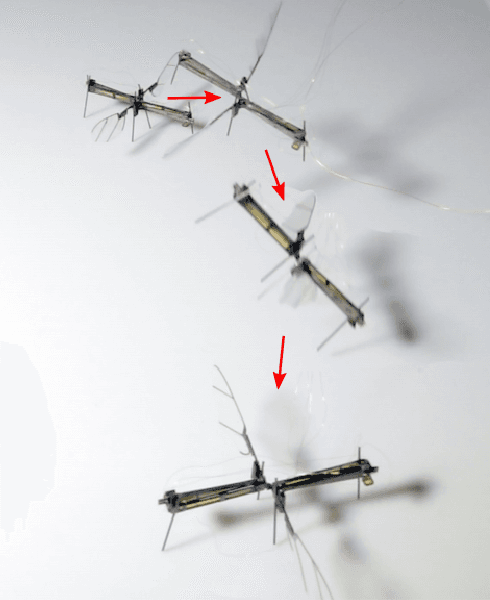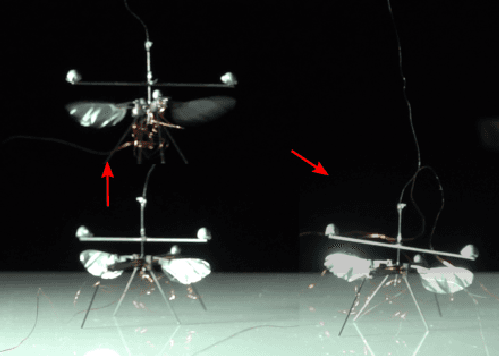Yogesh M Chukewad
RoboFly: An insect-sized robot with simplified fabrication that is capable of flight, ground, and water surface locomotion
Jan 08, 2020



Abstract:Aerial robots the size of a honeybee (~100 mg) have advantages over larger robots because of their small size, low mass and low materials cost. Previous iterations have demonstrated controlled flight but were difficult to fabricate because they consisted of many separate parts assembled together. They also were unable to perform locomotion modes besides flight. This paper presents a new design of a 74 mg flapping-wing robot that dramatically reduces the number of parts and simplifies fabrication. It also has a lower center of mass, which allows the robot to additionally land without the need for long legs, even in case of unstable flight. Furthermore, we show that the new design allows for wing-driven ground and air-water interfacial locomotion, improving the versatility of the robot. Forward thrust is generated by increasing the speed of downstroke relative to the upstroke of the flapping wings. This also allows for steering. The ability to land and subsequently move along the ground allows the robot to negotiate extremely confined spaces, underneath obstacles, and to precise locations. We describe the new design in detail and present results demonstrating these capabilities, as well as hovering flight and controlled landing.
A laser-microfabricated electrohydrodynamic thruster for centimeter-scale aerial robots
Jul 25, 2019



Abstract:Interest in flying insect-sized robots is driven by their advantages over larger robots. Their small size and low weight allow for larger deployment numbers for greater coverage at the same cost. Flapping wings represent one means for generating lift, but this requires a complex and failure-prone mechanism. A simpler alternative is electrohydrodynamics (EHD) thrust, which requires no moving mechanical parts. An EHD thruster creates a stream of ions through corona discharge at a sharp emitter tip. The ions are accelerated through an electric field, where they transfer their momentum to neutral air molecules through impacts, creating thrust. Previous work reported a 30 mg aircraft able to lift its own weight that was fabricated from predominantly silicon components formed through reactive ion etching. To avoid the expense and time associated with that process, here we introduce an alternative fabrication process based on 355 nm laser micromachining. Our fabrication time, from raw materials to complete assembly, takes less than 25 minutes. Furthermore, our approach allows for greater flexibility in materials selection. Our four-thruster device measures 1.8x2.5 cm and is composed of steel emitters and a lightweight carbon fiber mesh. The device is 43 mg and measured thrust is greater than its weight.
 Add to Chrome
Add to Chrome Add to Firefox
Add to Firefox Add to Edge
Add to Edge